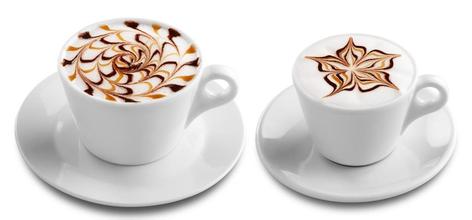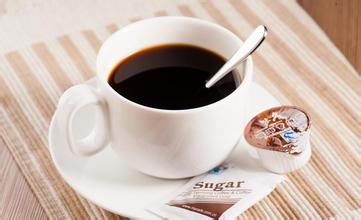Introduction to Harald Coffee, the most famous coffee in Ethiopia
The most famous coffee in Ethiopia is Harald coffee. Harald is located in eastern Ethiopia. Harald is an ancient city with a long history and one of the four holy cities of Islam. The Harald region has the best altitude for Arabica coffee and is the highest coffee producer in Ethiopia.
Harald, Ethiopia, like Mocha in Yemen, is a "handmade" coffee. Lahore coffee has a mixed flavor with mellow, moderate or mild acidity, and most importantly, it has almost the lowest caffeine content, about 1.13%. Harald is also a very special kind of coffee, its taste is very aggressive, ready to defeat your taste buds, it is hard to forget. Its earthy smell is unique to dry coffee, and that's why some people love it while others reject it. However, due to the different methods of handling the coffee after picking, the taste of Harald in Ethiopia is also different, some are rich, low-bodied and have a strong wine flavor, while others are fragrant and lubricated with a light fruity aroma. To roast Ethiopian Harald coffee, you can choose a lighter roast, which can maximize the fruity aroma of the coffee. If you deepen the roasting, the fruity flavor will be reduced and the spicy flavor will be more obvious.
Harald is usually divided into three types: long bean Harar, short bean Harald and single bean Harald. Among them, long bean Harar is the most popular and of the best quality. this kind of coffee is full-bodied, full-bodied, sour and full-bodied.
In short, Ethiopian coffee has a wild flavor and a rich flavor of red wine fermentation. It is not too much to say that it is the best coffee in the world, but Ethiopians who lack brands and are poorly packaged and not known to the world for hospitality often use coffee made on the spot to entertain relatives, friends and guests after meals or banquets. gradually formed a coffee culture phenomenon with a strong traditional cultural atmosphere.
Ethiopians are proud of coffee. They all think that the coffee beans produced in their country are the best in the world, while the coffee they brew at home is the best coffee in the world. Coffee is a part of Ethiopian life. Whether in the most remote Danakir Desert, or on the shores of Lake Awasa in the depths of the Rift Valley, whether in noisy cities or in the natural and quiet countryside, you can always smell the smell of coffee and stop to taste it.
Many people do not know that Ethiopia is the origin of coffee. Once upon a time, there was a town in southern Ethiopia called Kafa, where there were some red fruits. Shepherds found that the sheep were so excited after eating the fruit that they picked it down and tasted it, so the fruit was picked and cooked by local monks and used as refreshing food for night prayers. It was called "Kafa". Then it was spread all over the world, called "coffee".
Ethiopian coffee is mostly produced in the plateau above 2000 meters above sea level, with large producing areas such as Gima, Gamby, Yeerqifa, Sidamo and Harald. Because of the soil conditions, climatic conditions and the altitude of more than 2000 meters in these areas, it has created an ideal environment for the growth of coffee crops. Among them, the Montenegro region of Harald is the only place in the world with wild coffee, which is auctioned in London every year.

Important Notice :
前街咖啡 FrontStreet Coffee has moved to new addredd:
FrontStreet Coffee Address: 315,Donghua East Road,GuangZhou
Tel:020 38364473
- Prev

Introduction to the Western Ruwensori Mountain area of washed Robst Bean production area in Uganda
Uganda's coffee production ranks first in Africa, accounting for more than 70% of its total exports. Uganda is also the hometown and main producing area of Robes specialty coffee. In the 1960s, Ugandan coffee production remained at 3.5 million bags a year. By the mid-1980s, coffee production had dropped to 2.5 million bags a year, mainly for political reasons. But now coffee production is on the rise again, which is large at present.
- Next

Introduction to the Malaba coffee producing area in Rwanda
The inspiration story for the new limited edition premium coffee dates back more than 300 years, when coffee beans grown in South India were loaded onto British East India Company wooden sailboats and shipped to Europe. Sailing around the Cape of Good Hope in southwest Africa begins a six-month voyage where unique humidity and tropical sea breezes swell coffee beans, giving them a unique aroma and special character
Related
- Does Rose Summer choose Blue, Green or Red? Detailed explanation of Rose Summer Coffee plots and Classification in Panamanian Jade Manor
- What is the difference between the origin, producing area, processing plant, cooperative and manor of coffee beans?
- How fine does the espresso powder fit? how to grind the espresso?
- Sca coffee roasting degree color card coffee roasting degree 8 roasting color values what do you mean?
- The practice of lattes: how to make lattes at home
- Introduction to Indonesian Fine Coffee beans-- Java Coffee producing area of Indonesian Arabica Coffee
- How much will the flavor of light and medium roasted rose summer be expressed? What baking level is rose summer suitable for?
- Introduction to the characteristics of washing, sun-drying or wet-planing coffee commonly used in Mantenin, Indonesia
- Price characteristics of Arabica Coffee Bean Starbucks introduction to Manning Coffee Bean Taste producing area Variety Manor
- What is the authentic Yega flavor? What are the flavor characteristics of the really excellent Yejasuffi coffee beans?

